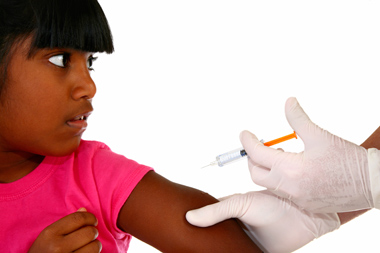Human Papillomavirus Vaccination
(Western Cape Government)
In February/March 2015, Western Cape Government Health together with the National Department of Health and the Department of Education, had professional teams travelling to schools across the Western Cape. Their aim was to vaccinate all girls in Grade 4, who were nine years and older and who attend a public or special school, against Human Papillomavirus (HPV).

Why is the Human Papillomavirus Vaccination Necessary?
Human Papillomavirus is the virus that causes cervical cancer. The vaccination protects girls from being infected by HPV and thus reduces the risk of developing HPV related cervical cancer later in life. Cervical cancer is the second most prevalent cancer among women after breast cancer. Close to 80% of cervical cancers are caused by HPV.
Statistics on HPV
- The incidence rate of Cervical cancer in South Africa is reported between 22.8 and 27 per 100 000 women as compared to the global average of 15.8.
- Annually there are some 5 743 new cases reported with 3 027 associated deaths in South Africa.
- 99% of cervical cancers are associated with HPV.
- About 7 in every 10 people will have HPV at some point in their lifetime.
- Two strains of HPV (HPV-16 and HPV-18) are found to cause over 70% of the cervical cancer cases.
- Cervarix®, that was provided, protects against HPV-16 and HPV-18 strains.
- The World Health Organization has recommended vaccinating girls before they are sexually active (between 9 to 13 years).
In August and September 2015, the professional teams will be going from school to school to provide dose 1 and 2 of the vaccine to eligible girls.
Parents and guardians should remember that vaccination is their choice. Parents need to sign a consent form if they want their daughter to be vaccinated. This vaccination prevents the infection of the virus from developing on the cervix. Only girls with a signed consent form will be vaccinated.
For more information, contact the Department of Health now, and let us save our young girls from this preventable disease.


